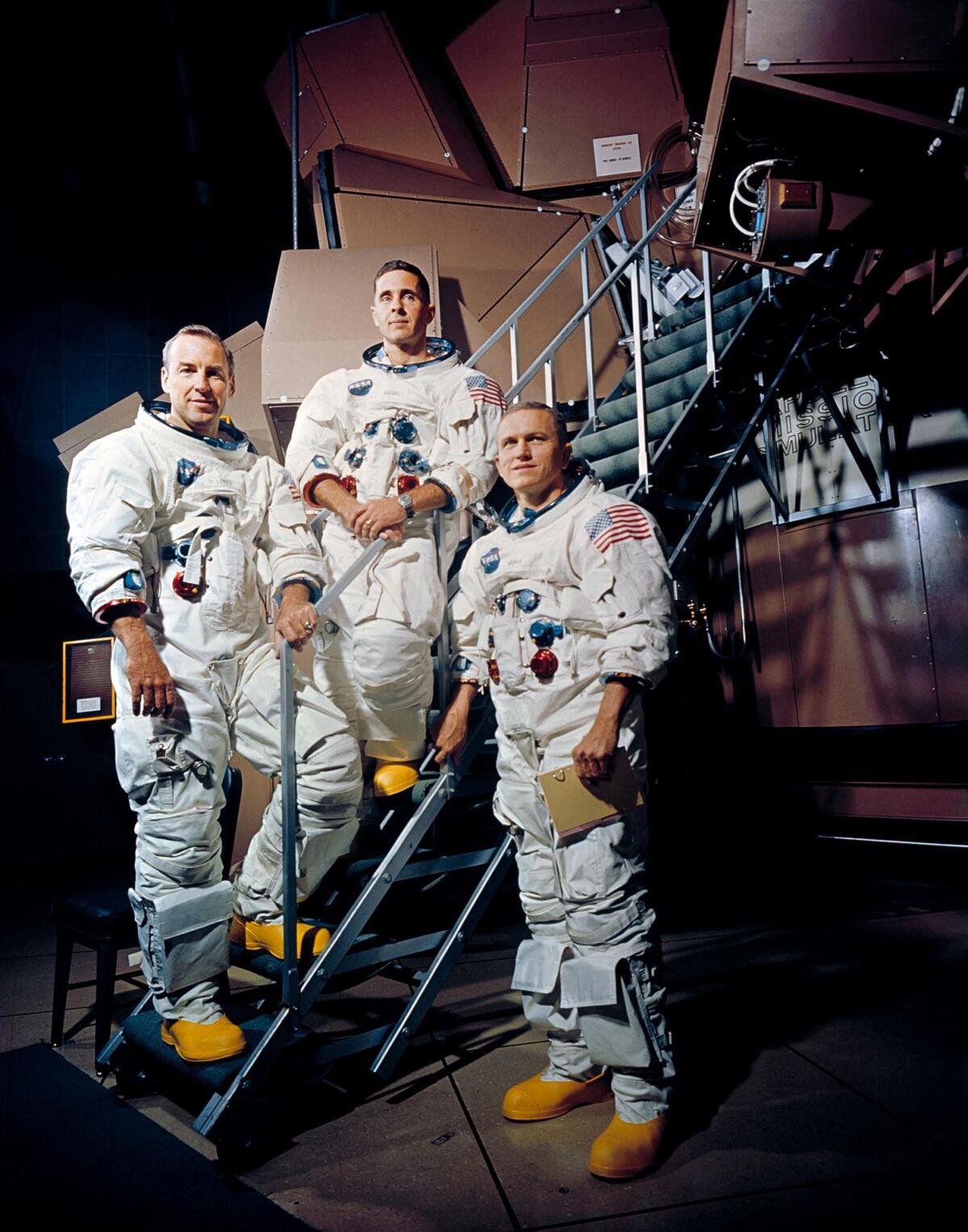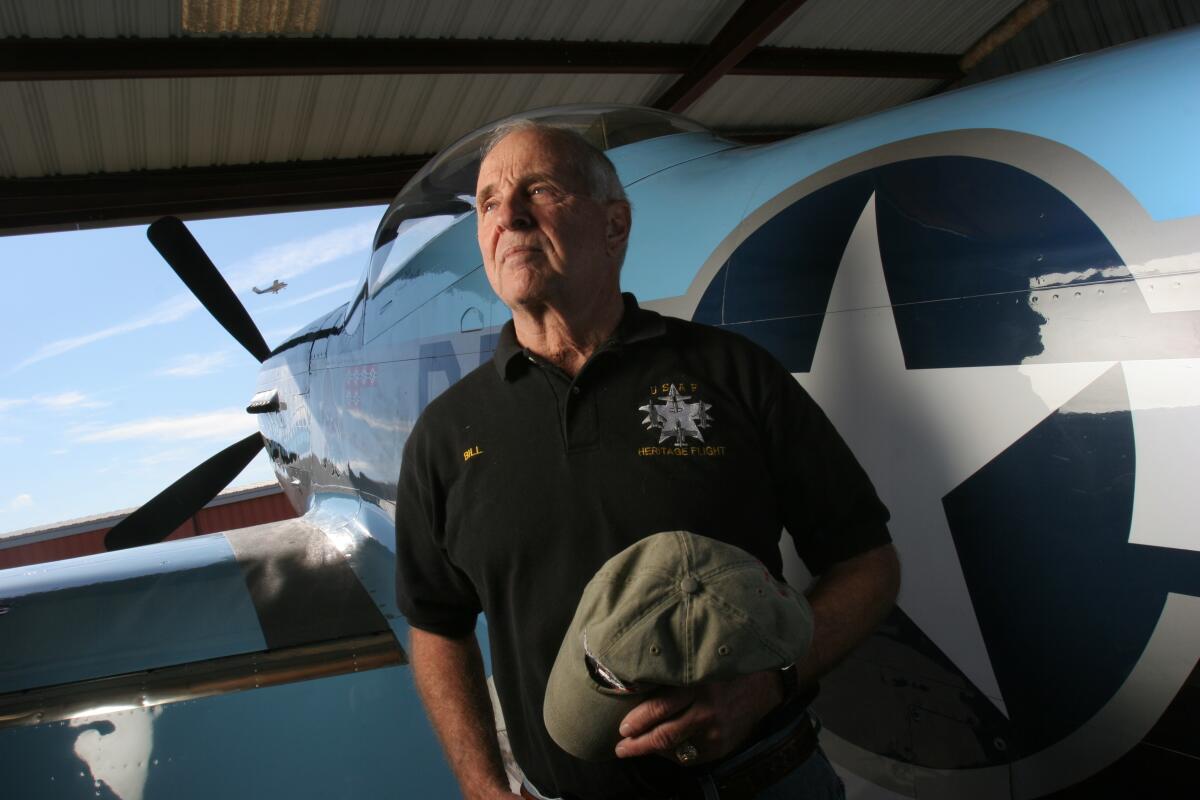-
Indigenous practices mitigated Eaton fire damage, Tongva leaders say - 55 mins ago
-
UFC 311 Recap: Islam Makhachev and Merab Dvalishvili Retain Titles in Los Angeles - 5 hours ago
-
California attorney general says bidding wars not exempt from price-gouging rules - 7 hours ago
-
Winter Storm Is Bringing at Least 6 Inches of Snow to the Northeast - 10 hours ago
-
Texans’ DeMeco Ryans Seemingly Takes Shot at NFL Officiating Following Loss to Chiefs - 11 hours ago
-
5 major banks offer mortgage relief in fire-ravaged L.A. areas, Newsom says - 14 hours ago
-
How to Watch Texans vs Chiefs: Live Stream NFL Divisional Playoffs, TV Channel, Prediction - 16 hours ago
-
What Border Crisis? Mexican Migrant Shelters Are Quiet Ahead of Trump - 20 hours ago
-
Southern California in ‘uncharted territory’ as fire weather returns all next week - 20 hours ago
-
New Trump Meme Comes With a Legal Waiver - 22 hours ago
Bill Anders, former Apollo 8 astronaut, dies in plane crash
Bill Anders, the Apollo 8 astronaut who was one of the first humans to orbit the moon and who took the iconic first photo of Earth rising over the lunar surface, died Friday when a plane he was piloting crashed near the San Juan Islands off the coast of Washington state. He was 90.
He was flying alone when the plane, a Beechcraft T-34 Mentor, crashed into the water near Roche Harbor, Wash., at about 11:40 a.m., the Federal Aviation Administration said.
“The family is devastated,” his son, retired Air Force Lt. Col. Greg Anders, told the Associated Press. “He was a great pilot and we will miss him terribly.”
After a search with helicopters and boats, a state dive team recovered the pilot’s body, said Petty Officer Annika Hirschler, a U.S. Coast Guard spokesperson.
The crash is under investigation by the FAA and the National Transportation Safety Board.

Bill Anders, center, with Apollo 8 crewmates Jim Lovell, left, and Frank Borman before their 1968 mission.
(NASA)
On Dec. 24, 1968, Anders and two other astronauts aboard Apollo 8, Frank Borman and Jim Lovell, became the first people to orbit the Moon. Anders famously read from the Book of Genesis on a live Christmas Eve broadcast from space.
Anders and his crewmates were also the first humans to witness the blue Earth rising over the moon’s gray surface.
As the spacecraft was rotating, Anders looked out the side window and was taking photos when the Earth emerged from behind the moon.
“Oh, my God, look at that picture over there!” he exclaimed in a recorded exchange. “There’s the Earth comin’ up. Wow, is that pretty!”
That moment, captured on film, was the iconic photo “Earthrise.” The image captivated people worldwide and became a profound symbol of the environmental movement, showing the fragility of life on Earth in the vastness of space.
Looking out from the spacecraft, Anders said later, the Earth seemed “like a fragile Christmas tree ornament. And I thought to myself, you know, it’s too bad we don’t treat it more like a Christmas tree ornament.”
The photo has had a major influence on society. Drawing on the perspective captured in the photo, environmentalists organized the first Earth Day in 1970.
NASA Administrator Bill Nelson said Anders “offered to humanity among the deepest of gifts an astronaut can give.”
“He traveled to the threshold of the Moon and helped all of us see something else: ourselves. He embodied the lessons and the purpose of exploration. We will miss him,” Nelson wrote in a social media post.
The International Astronomical Union commemorated the taking of the photo in 2018 by naming one of the moon’s craters Anders’ Earthrise.
In a NASA video interview in his later years, Anders reflected on how seeing Earth from that perspective influenced his thinking about people and the planet.
“It’s really too bad, you know, we’re shooting missiles and rockets and whatnot at each other on this tiny little place we call home. It’s the only home in the universe for us humans,” he said. “It’s too bad we don’t treat it a little better.”
When he snapped the image with a Hasselblad camera, he saw the Earth emerging not over the moon but to the side of it. In the photo’s original orientation, the moon is on the right side. But the image has typically been framed with the lunar surface at the bottom, making the Earth appear to be rising.
In one interview, Anders said the photo “gave a jumpstart to the environmental movement.”
“It helped point out that not only is the Earth delicate and fragile, but it’s also very finite,” he said. “All of the views of the Earth from the moon have let the human race … realize that we’re all jammed together on one really kind of dinky little planet. And we’d better treat it and ourselves better, or we’re not going to be here very long.”
Anders was the lunar module pilot on the Apollo 8 mission. In a 1997 interview about the space program, he said that before his flight, he’d guessed there was “one chance in three we’d have a successful mission.”
William A. Anders was born in 1933 in Hong Kong to a military family. His father was a U.S. Navy officer.
Anders attended Grossmont High School in El Cajon in San Diego County. He went on to the Naval Academy, then was commissioned by the Air Force.
He retired from the Air Force reserve as a major general. But he never stopped flying, even decades after he returned from space.

Anders at San Diego County’s Ramona Airport in 2006.
( John Gastald / San Diego Union-Tribune)
After Apollo, Anders carved out an executive career that spanned the public and private sectors. Known for a gruff manner and exacting attention to detail, he served as executive secretary of the National Aeronautics and Space Council, a commissioner on the Atomic Energy Commission and the first chairman of the Nuclear Regulatory Commission.
Later came stints as ambassador to Norway, vice president of General Electric Co. and executive vice president at Textron Inc. In the early 1990s, he served as chairman and chief executive office of General Dynamics, overseeing belt-tightening at the defense contractor.
In 1996, Anders and his wife co-founded the Heritage Flight Museum, now located next to Skagit Regional Airport in Burlington, Wash. In early October, Anders and his son Greg — who is now the museum’s executive director — flew a pair of T-34 aircraft in a formation demonstration above the museum.
Anders and his wife, Valerie, divided their time between Washington and the San Diego community of Point Loma. He is survived by six children and more than a dozen grandchildren.
Arizona Sen. Mark Kelly, a former astronaut, said that through the “Earthrise” photo, Anders “forever changed our perspective of our planet and ourselves.”
“He inspired me and generations of astronauts and explorers. My thoughts are with his family and friends,” Kelly wrote in a social media post.
The Associated Press contributed to this report.
Source link













